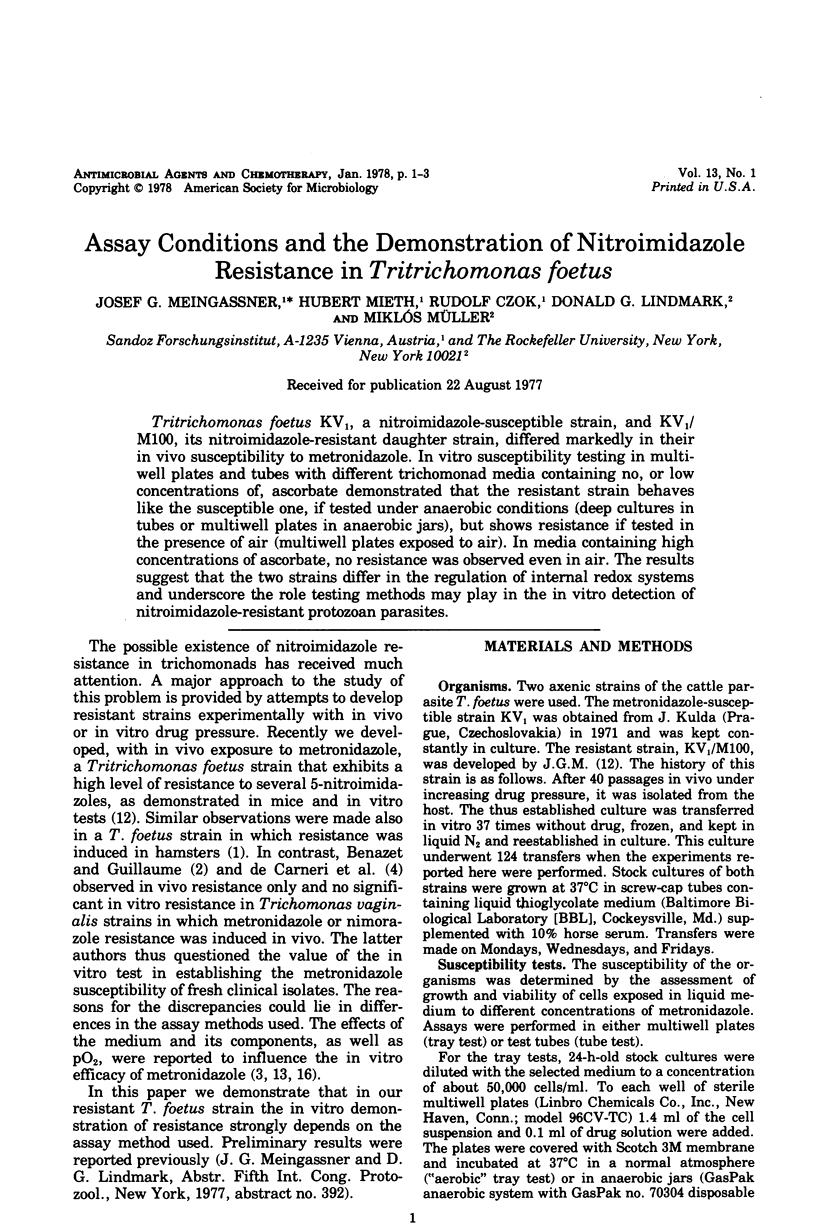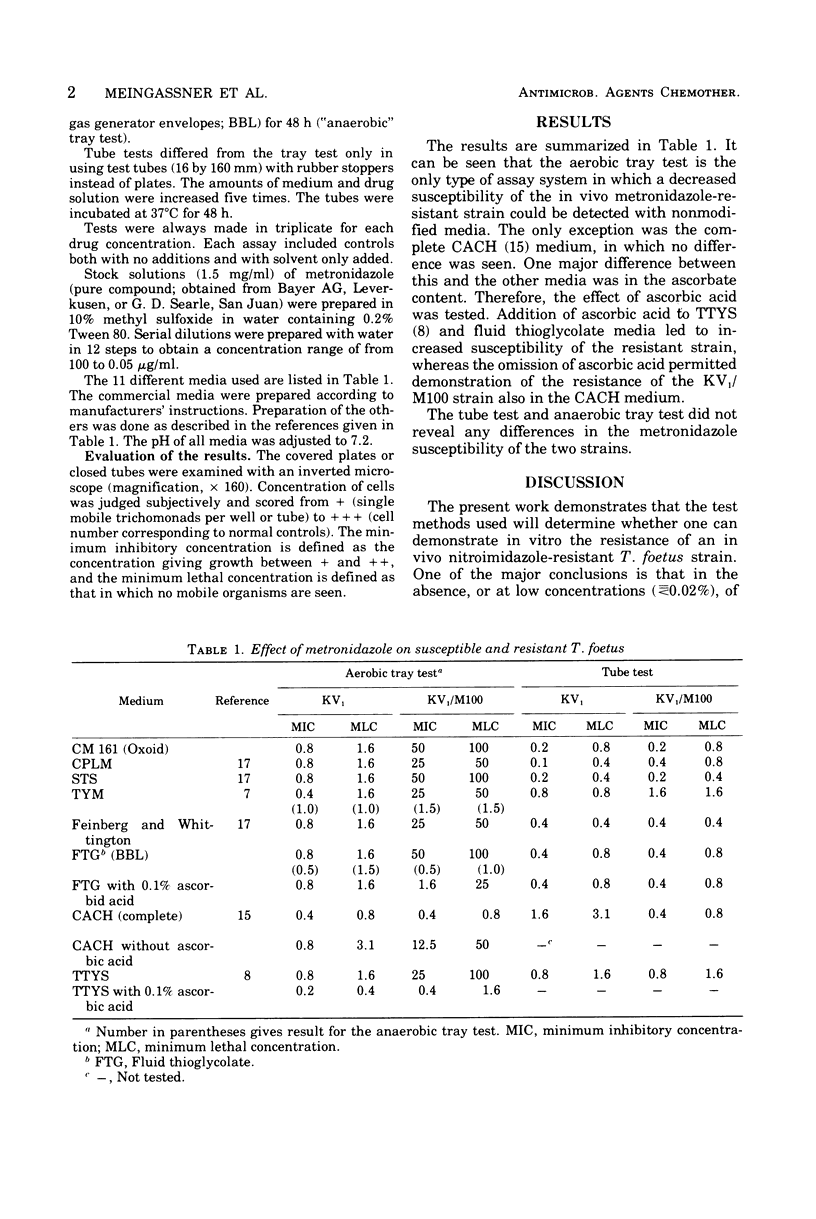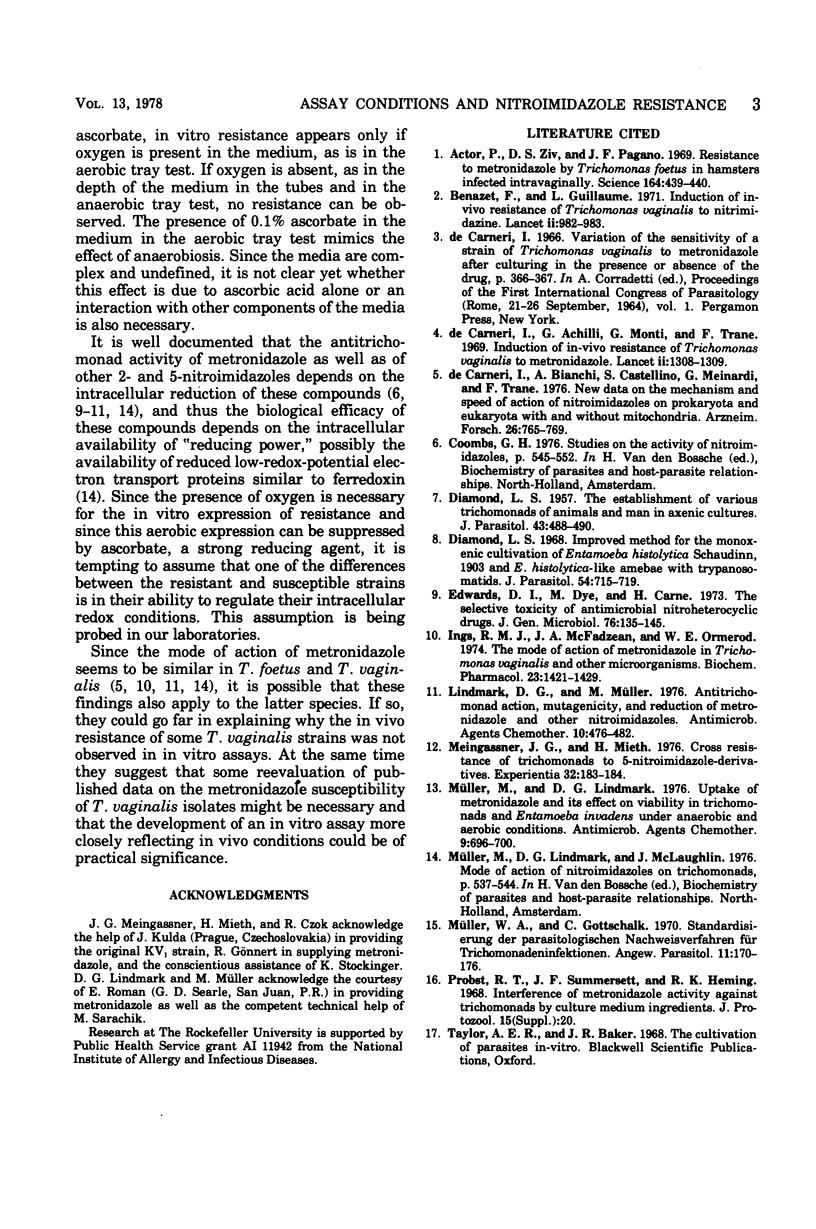Abstract
Tritrichomonas foetus KV1, a nitroimidazole-susceptible strain, and KV1/M100, its nitroimidazole-resistant daughter strain, differed markedly in their in vivo susceptibility to metronidazole. In vitro susceptibility testing in multiwell plates and tubes with different trichomonad media containing no, or low concentrations of, ascorbate demonstrated that the resistant strain behaves like the susceptible one, if tested under anaerobic conditions (deep cultures in tubes or multiwell plates in anaerobic jars), but shows resistance if tested in the presence of air (multiwell plates exposed to air). In media containing high concentrations of ascorbate, no resistance was observed even in air. The results suggest that the two strains differ in the regulation of internal redox systems and underscore the role testing methods may play in the in vitro detection of nitroimidazole-resistant protozoan parasites.
Full text
PDF


Selected References
These references are in PubMed. This may not be the complete list of references from this article.
- Actor P., Ziv D. S., Pagano J. F. Resistance to metronidazole by Trichomonas foetus in hamsters infected intravaginally. Science. 1969 Apr 25;164(3878):439–440. doi: 10.1126/science.164.3878.439. [DOI] [PubMed] [Google Scholar]
- Benazet F., Guillaume L. Induction of in-vivo resistance of trichomonas vaginalis to nitrimidazine. Lancet. 1971 Oct 30;2(7731):982–983. doi: 10.1016/s0140-6736(71)90309-6. [DOI] [PubMed] [Google Scholar]
- Carneri I., Bianchi A., Castellino S., Meinardi G., Trane F. New data on the mechanism and speed of action of nitroimidazoles on prokaryota and eukaryota with and without mitochondria. Arzneimittelforschung. 1976;26(5):765–769. [PubMed] [Google Scholar]
- DIAMOND L. S. The establishment of various trichomonads of animals and man in axenic cultures. J Parasitol. 1957 Aug;43(4):488–490. [PubMed] [Google Scholar]
- De Carneri I., Achilli G., Monti G., Trane F. Induction of in-vivo resistance of trichomonas vaginalis to metronidazole. Lancet. 1969 Dec 13;2(7633):1308–1309. doi: 10.1016/s0140-6736(69)90849-6. [DOI] [PubMed] [Google Scholar]
- Diamond L. S. Improved method for the monoxenic cultivation of Entamoeba histolytica Schaudinn, 1903 and E. histolytica-like amebae with trypanosomatids. J Parasitol. 1968 Aug;54(4):715–719. [PubMed] [Google Scholar]
- Edwards D. I., Dye M., Carne H. The selective toxicity of antimicrobial nitroheterocyclic drugs. J Gen Microbiol. 1973 May;76(1):135–145. doi: 10.1099/00221287-76-1-135. [DOI] [PubMed] [Google Scholar]
- Ings R. M., McFadzean J. A., Ormerod W. E. The mode of action of metronidazole in Trichomonas vaginalis and other micro-organisms. Biochem Pharmacol. 1974 May 1;23(9):1421–1429. doi: 10.1016/0006-2952(74)90362-1. [DOI] [PubMed] [Google Scholar]
- Lindmark D. G., Müller M. Antitrichomonad action, mutagenicity, and reduction of metronidazole and other nitroimidazoles. Antimicrob Agents Chemother. 1976 Sep;10(3):476–482. doi: 10.1128/aac.10.3.476. [DOI] [PMC free article] [PubMed] [Google Scholar]
- Meingassner J. G., Mieth H. Cross-resistance of Trichomonads to 5-nitroimidazole-derivatives. Experientia. 1976 Feb 15;32(2):183–184. doi: 10.1007/BF01937754. [DOI] [PubMed] [Google Scholar]
- Müller M., Lindmark D. G. Uptake of metronidazole and its effect on viability in trichomonads and Entamoeba invadens under anaerobic and aerobic conditions. Antimicrob Agents Chemother. 1976 Apr;9(4):696–700. doi: 10.1128/aac.9.4.696. [DOI] [PMC free article] [PubMed] [Google Scholar]


